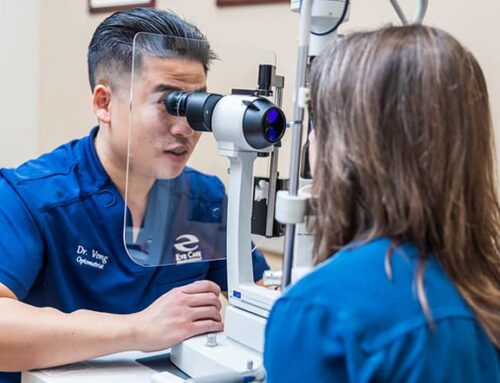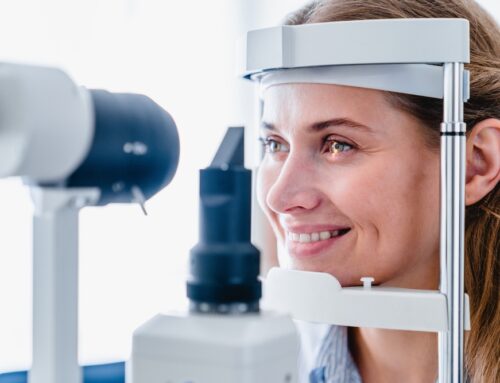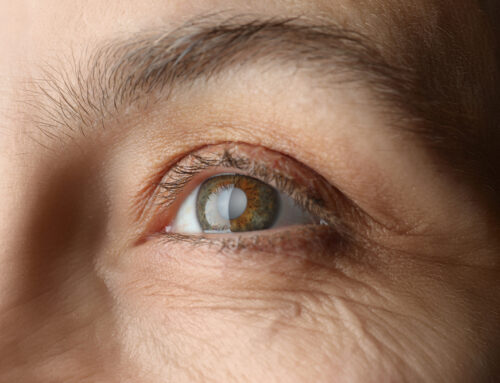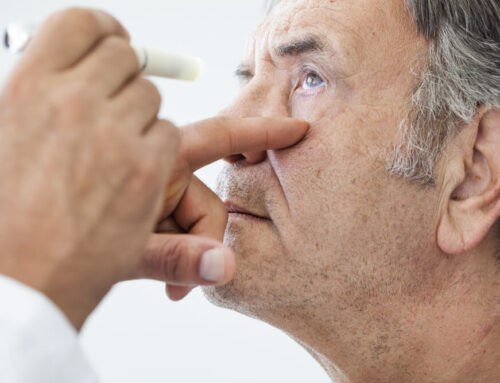The CDC tells us about 3 million Americans have glaucoma. It is the second leading cause of blindness worldwide. It doesn’t have to be this way, though. If it’s caught early, you can preserve your vision and prevent additional vision loss. That’s why it’s so important to talk about glaucoma.
Open-angle glaucoma, the most common form, results in increased eye pressure. In fact, eye pressure has a lot to do with glaucoma. Why is this?
Understanding Glaucoma
Before we answer this question, let’s take a quick step back to understand Glaucoma. This is not actually one condition, but a group of diseases that can result in vision loss and even blindness. It does so by damaging the nerve in the back of your eye called the optic nerve.
Vision loss from glaucoma usually affects your peripheral vision first, meaning what you can see on the side of your head when looking ahead. As it progresses, it will affect your central vision. This is to be avoided if at all possible, because this is needed for seeing everyday objects clearly and for common daily tasks like reading and driving.
Currently, there is no cure for glaucoma. It can be treated and managed though, and most patients are quite pleased with their results. This is done with eye drops, oral medicine, laser surgery, or a combination of the three. This is done to reduce eye pressure as well as prevent permanent vision loss.
Can Eye Pressure Lead to Glaucoma?
When we say eye pressure, we are talking about the pressure in your eye that gets higher when fluid can’t drain normally out of the front. Fluid normally flows through the anterior chamber and out of an opening where the iris and cornea meet. In the common forms of glaucoma, fluid can’t move normally through the eye and the pressure builds.
You may be wondering what eye pressure has to do with glaucoma. A lot actually! Research shows that high eye pressure increases your risk for glaucoma. While high eye pressure alone does not cause glaucoma, it is a significant risk factor.
Experts believe that when the pressure inside your eye gets too high, it can damage the optic nerve and cause vision loss. Studies also show that lowering eye pressure can help stop vision loss from glaucoma. That’s why it’s important to control the pressure inside your eyes.
Measuring Eye Pressure
It’s important to point out that how much pressure is “too much” and leads to glaucoma is not the same across the board. Whether you develop glaucoma depends on the amount of pressure your optic nerve can handle. There is no specific level of elevated eye pressure that definitely leads to glaucoma and no lower level that will absolutely eliminate a person’s risk of developing glaucoma.
Eye pressure is measured in millimeters of mercury (mm Hg). Normal eye pressure ranges from 12-22 mm Hg. For most people, eye pressure above 21 is higher than normal and enough to be cause for concern. Early diagnosis and treatment of glaucoma is the key to preventing vision loss.
Visit a Reno Ophthalmologist to Learn More About Glaucoma
While increased eye pressure, sometimes called intraocular pressure or IOP, is usually present, even patients with normal range IOP can develop glaucoma. The CDC tells us that half of people with glaucoma don’t know they have it, yet early intervention is key to treating it. We encourage you to get a healthy start in 2022 by learning about glaucoma and cataracts, and take steps to reduce your risk of vision loss!
Taking action to preserve your vision health is key to your long-term success! It is time to book an appointment with an ophthalmologist. For six decades, the ophthalmologists at Eye Care Professionals of Reno have set the standard for excellent medical eye care. Preserving, restoring, and improving vision for our patients is at the forefront of everything we do!











